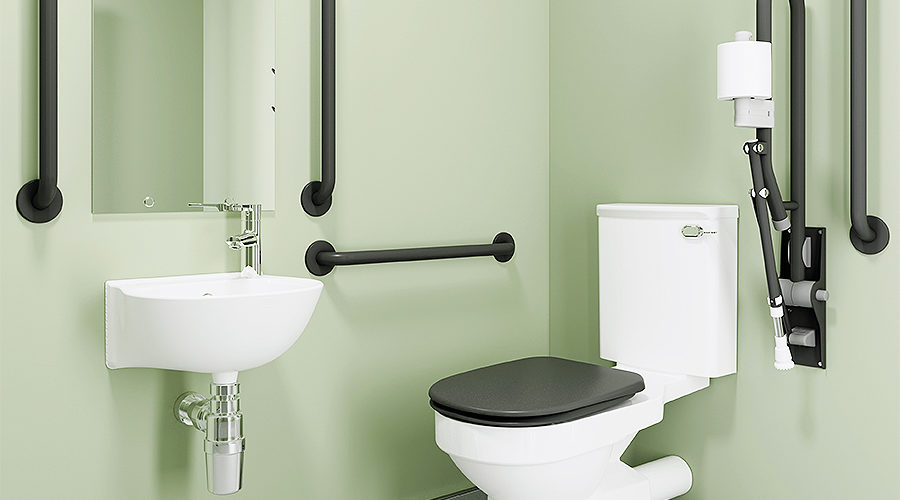Here, Stuart Reynolds, Head of Product and Marketing at AKW, discusses some of the key issues for disabled users in public washrooms and how to ensure that compliance is achieved when designing such a space.
AKW
According to Scope, there are 14.1 million disabled people in the UK and more than 4.4 million of them are in work. Although the range of disabilities is wide, private- and public-sector businesses and services have a responsibility, under the 2010 Equality Act, to ensure that disabled people are not put at a substantial disadvantage. When it comes to disabled washrooms, the Building Regulations lay out guidance on how to ensure inclusivity in both new and existing buildings.
No ‘one size fits all’
Doc M of the Building Regulations was introduced to provide specifiers and installers alike with practical guidance on how to create more accessible washroom spaces. The regulations are a legal requirement in new construction projects and for guidance in existing buildings. Although Doc M aims to advise on the minimum standard for an accessible washroom, there is no ‘one-size-fits-all’ solution for disabled users. For example, a washroom that is billed as ‘wheelchair accessible’ might not be straightforward for someone in a motorised wheelchair, who has no ability to stand and support themselves using the grab rails during transference to the toilet and back again.
Despite it being impossible to tailor accessible washrooms to meet everyone’s needs, there are some basics that can be incorporated to improve the washroom experience for a wide range of disabled people. According to one wheelchair user, thinking about disabled people as ‘people’ is a good place to start. So, ensuring that there are mirrors for those at both standing and wheelchair height is nice to have. A more essential design flaw experienced by many is an insufficient turning circle space in the disabled washroom for those in a wheelchair.
Doc M compliance
So, how can public space washrooms ensure that they are as accessible as possible? As well as following the Doc M guidelines, specifiers for commercial and public properties should also refer to BS 8300-2 2018, which gives even further guidance on the size, layout and fittings appropriate to disabled toilet facilities. To ensure Doc M compliance, specifiers need to use Doc M-compliant sanitaryware, toilets, grab rails, hand dryers and soap dispensers etc. alongside the Doc M room layouts that offer guidance on designing the space, turning circles and the positioning of the sanitaryware and accessibility features.
AKW has recently ugraded its Doc M sanitaryware range for public-use accessible toilets and washrooms, to ensure that compliance is as straightforward as possible. A design advice guide has also been created to make the design and installation process even easier. There are 10 AKW Doc M packs to choose from and they range from fully-compliant Doc M washrooms (including hand dryers, soap dispensers etc.), to individual toilet cubicles. As well as traditional styling, there are two contemporary Doc M packs that feature stainless-steel rails to fit in with any modern design aesthetic.
Accessibility should never be an afterthought and with the help of Doc M-specific washroom products, it is more straightforward than ever before. To see what compliance looks like, why not download the guide.








